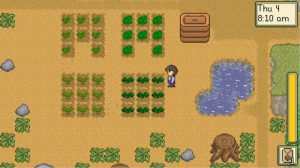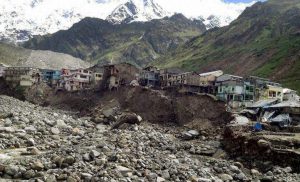If you live in India’s capital, you don’t think much of more blocks of uprooted concrete on the street. “Oh yes, someone’s digging for something or the other, again,” you tell yourself. If you’re driving, you give another grunt of annoyance or resignation, because it means another pothole to negotiate.
What if you walk into an art exhibition indoors and find yourself on a narrow path, with uprooted concrete blocks taking up most of the space on either side? The shock is greater when installation artist Vibha Galhotra tells you that she and her assistants picked up all these blocks within a radius of 3 km from the exhibition in south Delhi’s Lado Sarai. You realise how much our city fathers keep digging and uprooting.
It’s this realisation that Galhotra is aiming at in [In]Sanity in the Age of Reason, as she calls her solo exhibition. Starting with the five basic elements of Greek philosophers as her foundation, she moves quickly to show the disastrous changes we’re making in the Anthropocene Age.
And it’s all from Delhi. The rubble strewn path leads you to a 10 minute film on the state of the Yamuna that you have to see to believe — the methane bubbling in the black water, untreated sewage flowing from open drains and most tellingly, a white cloth dipped in the water comes out dripping black and is used as a shroud. By the end, you may be glad the medium of film does not enable you to smell what you see.
From water to air, and you see a photograph of Galhotra standing in front of North Delhi’s Burari Garbage Hill, desperately trying to catch some fresh air in a butterfly net.
In art circles, Galhotra is known for her use of ghungroos — the anklet bells used by dancers. She has used them here to depict climate change — the classic graph of rising temperature is made with ghungroos. You can almost feel the bells shrieking in higher pitch as the line climbs and climbs.
Installation artists have lots of tricks. One Galhotra uses here is a panel on which you bang, and a cacophony of voices breaks out. The harder you bang, the more cacophonous the noise. Perhaps the scariest exhibit is a pair of rags — one white, the other dirty grey after Galhotra used it to wipe the leaves of the plants she grows on the balcony of her south Delhi home.
Different lenses
Many scientists, journalists and activists have been talking and writing about the momentous transformation of the earth by human activities, especially in an era already hit by climate change. Noted novelist Amitav Ghosh recently wrote a lament because he could not find authors engaging with this, the biggest change of our times.
Now artists like Vibha Galhotra are taking up that challenge, seeing climate change, pollution, deforestation and similar ills through their own lenses. That may have more effect than a factual rendering of the situation.
The exhibition is on at F-320 Lado Sarai, New Delhi, till April 17.
![<p>Vibha Galhotra stands in front of a drain carrying untreated sewage, trying to catch some fresh air with a butterfly net [image by Vibha Galhotra]</p>](https://dialogue.earth/content/uploads/2017/04/Photo-exhibition.jpg)


![Arctic ice continues to melt, we must approach the challenge with some hope [image by: NASA/Kathryn Hansen]](https://dialogue.earth/content/uploads/2017/04/Arctic-ice-NASA-300x200.jpg)




